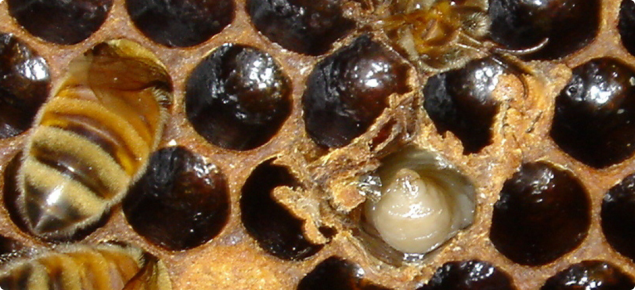Sacbrood disease
Some research workers thought that sacbrood virus, in combination with bacteria, caused European foulbrood disease. However, in 1912 it was shown that sacbrood virus was not associated with European foulbrood disease.
Because of similarities in appearance between sacbrood disease, European foulbrood disease and American foulbrood disease, it is necessary for beekeepers to recognise the different signs of these diseases.

